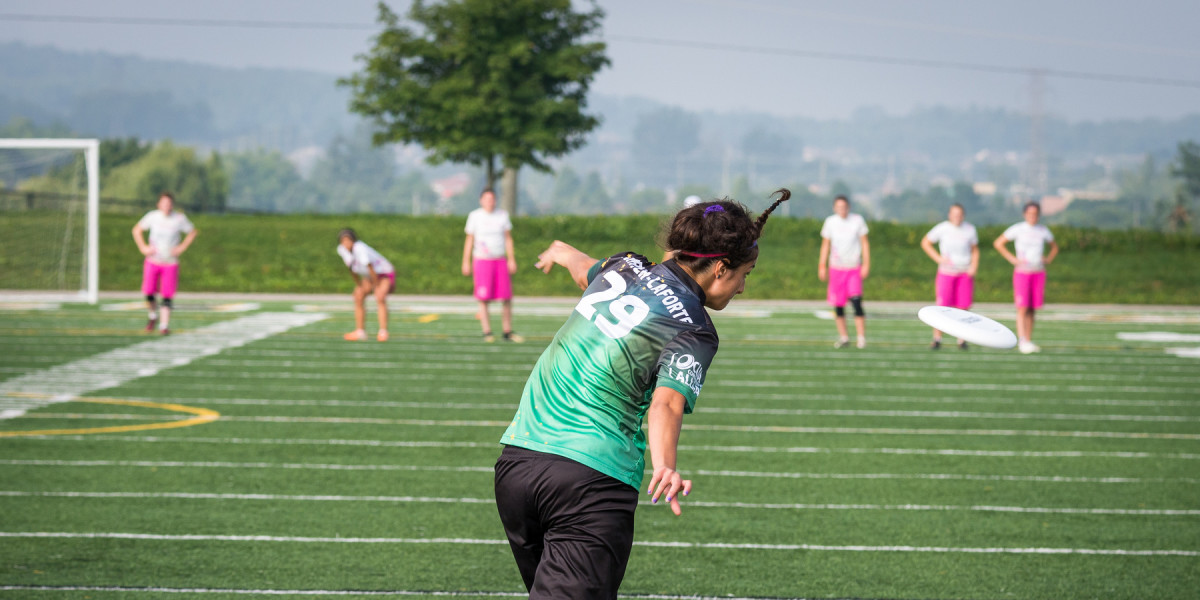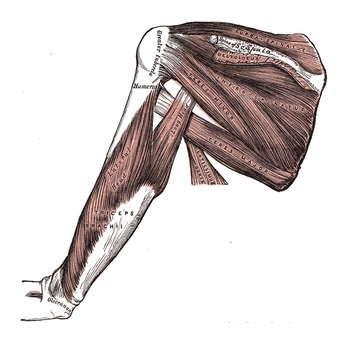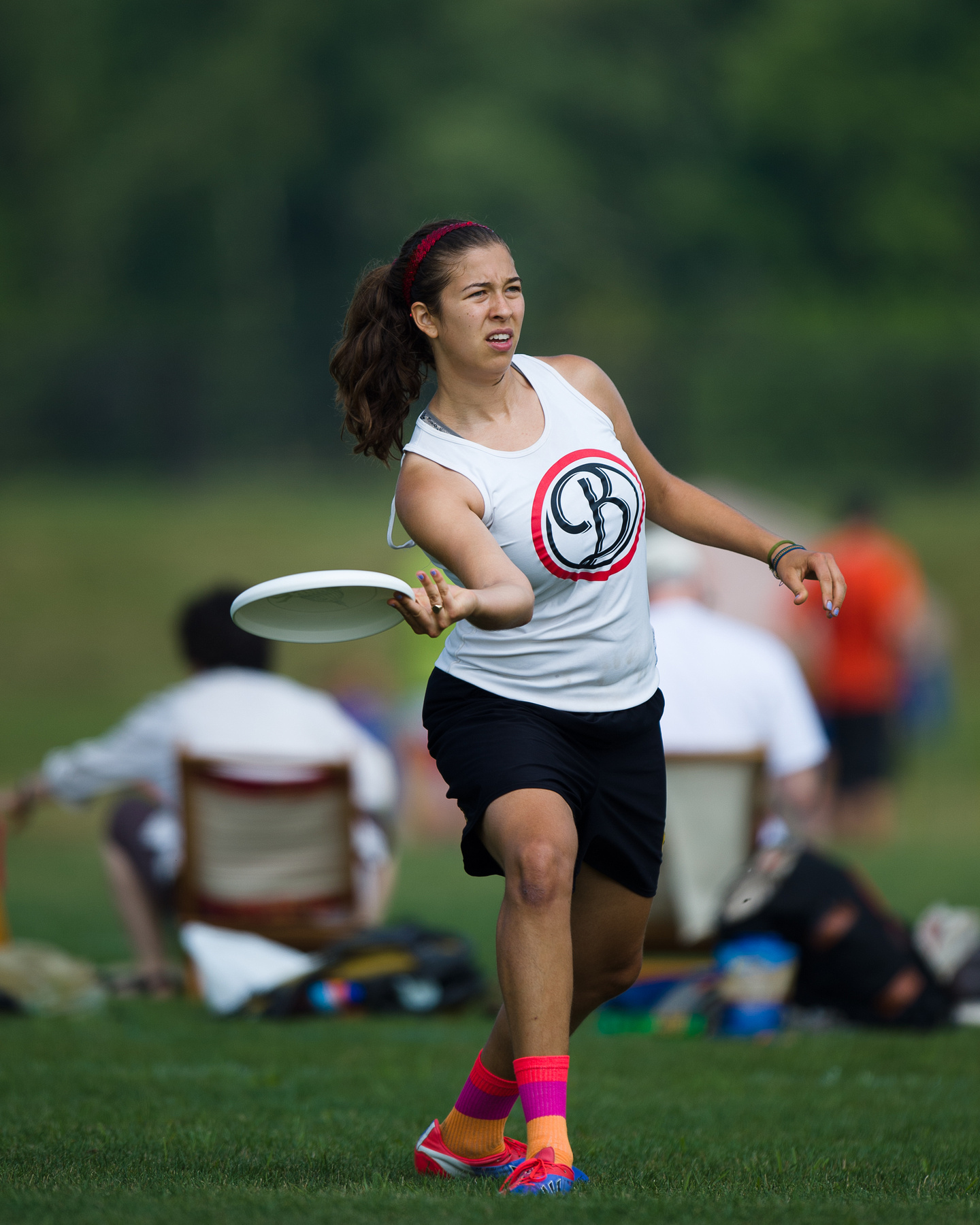 Purazar Bhadha UltiPhotos.com
Purazar Bhadha UltiPhotos.com
The first and second articles in the Stability Series detailed the relationship between a banging booty and on-field performance. The third installment introduced the concept of core stiffness and looked at why crunches, sit-ups, and other tomfoolery is an inefficient means of training for ultimate. I hope you have spent some time working on turning your buns into steel and your tummy into a rigid tree-trunk. If you have yet to peruse the first installments, I recommend doing so before continuing.
Continuing our journey up the body, the fourth installment of the Stability Series looks at the shoulder. Made up of numerous parts, the shoulder is a ball-and-socket joint consisting of the humerus (upper arm), the scapula (shoulder blade), and the clavicle (collarbone). The shoulder is an integral but often overlooked component of the kinetic chain, and it plays an essential role in athletic performance. Much like other facets of the kinetic chain, a stable shoulder is a healthy shoulder and many injuries related to the shoulder represent the long-term consequences of an unstable joint.
 While few (if any) studies exist on the long-term effects of repeatedly hucking a disc, there is a surfeit of literature on shoulder health in relation to baseball. In regards to professional baseball pitchers, Sherry Wener et al. note that throwing creates an extreme amount of force on the shoulder. Other researchers have argued that the torque and stress of throwing can cause injuries such as SLAP Tears (superior labrum anterior to posterior), glenoid labrum tears related to the long head of the biceps, internal impingement, and scapular dysfunction.
While few (if any) studies exist on the long-term effects of repeatedly hucking a disc, there is a surfeit of literature on shoulder health in relation to baseball. In regards to professional baseball pitchers, Sherry Wener et al. note that throwing creates an extreme amount of force on the shoulder. Other researchers have argued that the torque and stress of throwing can cause injuries such as SLAP Tears (superior labrum anterior to posterior), glenoid labrum tears related to the long head of the biceps, internal impingement, and scapular dysfunction.
Minimizing the damaging effects of a season of ultimate begins with strengthening the stabilizers of the shoulder. A number of muscles and ligaments must function together properly in order to ensure that the shoulder remains healthy. A collection of muscles, the subscapularis, supraspinatus, infraspinatus, and teres minor, make up the rotator cuff, which covers the head of the humerus and provides the shoulder with stability. The muscles of the upper back, the trapezius, levator scapulae, rhomboids, and serratus anterior are also critical to shoulder health.
A healthy and happy shoulder demands that these muscles work uniformly to stabilize the shoulder, counteract the increased internal and external rotation caused by throwing, and minimize the subsequent increased risk of injury. Unfortunately, many athletes suffer from a condition colloquially known as “overactive upper traps.” The upper trap essentially assists in in raising your arm; however, when paired with weak rotator and upper back muscles, the upper trap can become dominant–which is great if you want to look like the hulk on the field, less great if you want to avoid unpleasant things such as headaches, sore jaws, and tingling pain.

Kevin Leclaire UltiPhotos.com
Training regimens for the shoulder should train both muscles and movement patterns. Without adequately balancing the complicated musculature of the shoulder through isolation exercises, proper movement will range from frustrating to mind-numbingly impossible. Conversely, sticking to only full-shoulder exercises like pull-ups and chin-ups may result in over-taxing unprepared muscles and potentially exasperating any existing issues. I recommend a training protocol that strengthens the back and rotator cuff muscles while also reinforcing sound movement. Here are some of my favorite exercises and progressions:
- In a seated position, establish a neutral position and grasp the underside of a chair or bench.
- Ensure the shoulder stays anchored and slowly tilt your head away from the side being stretched.
- Hold for 2 to 4 minutes per-side.
- This is a great stretch to help alleviate any potential overactive trap issues.
Flexion and External Rotation Shoulder Stretch
- Begin with a broomstick or piece of PVC pipe grasped firmly in your hands with your palms facing you, slightly outside of shoulder width.
- Grip may widen depending upon flexibility and experience with the stretch.
- Place your elbows on a bench or table in front of you, shoulder width apart, and inside the width of your hands.
- Slowly lower yourself into shoulder flexion by bending at the hips and keeping a neutral spine.
- At the end of the range of motion, you may want to extend the elbows to increase the stretch.
- Hold for 2 to 4 minutes.
- Start by looping a band around a solid structure, then step back until the arms are extended and there is tension on the band.
- Stand shoulder width apart and attempt to maintain a deadbug position with a neutral spine.
- Start with the arms fully extended and the shoulders protracted, then begin the movement by fully retracting the shoulder blades to a down and back position as you pull back on the band.
- Try to accomplish full range of motion with the shoulder blade through protraction and retraction.
- Ensure that the shoulders do not shrug up towards the ears and that you do not pull back too far, causing the shoulders to round forwards.
- Perform 15 repetitions, 3 times per day.
- You can also try a banded pull apart.
- Begin by hanging from a pull-up bar with shoulders and arms fully extended.
- Pull your shoulder blades down and back without bending the elbows.
- Attempt to maintain a deadbug position.
- Perform 15 repetitions up to 3 times per day.
- You can also try the pushup position.
The shoulder is a part of the kinetic chain and, as such, must be trained for movement quality and stability. Focus on taking your time and performing each progression as perfectly as possible. Try some of these exercises and let me know how it goes in the comments. With some work you should be able to throw more consistently, feel less discomfort after tournaments, and reduce your risk of injury. The next installment will look at exercises that stress the totality of a stable kinetic chain, such as farmers’ walks and sled push variations.











Comments Policy: At Skyd, we value all legitimate contributions to the discussion of ultimate. However, please ensure your input is respectful. Hateful, slanderous, or disrespectful comments will be deleted. For grammatical, factual, and typographic errors, instead of leaving a comment, please e-mail our editors directly at editors [at] skydmagazine.com.